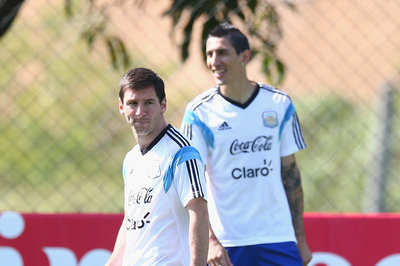For a short while he was one of the best, but his powers ebbed as his body became ever more fragile. Up at 20, retired at 36, but not the same player after 26 -- you can't take anything for granted.
Eric Chavez, the veteran third baseman, retired on Wednesday, effective immediately. Ongoing knee problems finally put an end to a career that was on life-support for years. Still, with 260 career home runs, 1615 games played, and six Gold Gloves, Chavez leaves behind quite a legacy at the hot corner. Because of his increasing fragility and accompanying diminution of skills, there will always be a question of what might have been.
From 1999, when he first became a regular, to 2010, his last season with the team that made him the 10th-overall pick of the 1996 draft, the Oakland A's played 1,942 games. Chavez played in 1320 of them, or a little more than two-thirds. This was not by design. Plantar fasciitis sidelined Chavez in his rookie season, and though there was then a stretch in which Chavez was largely healthy in five of the next six years, from 2006 on there was a constant litany of back and shoulder problems that repeatedly sent him to the disabled list. He went on the DL 12 times during the course of his career, including seven listings on the dreaded 60-day DL.
For the five years he was at his best, Chavez was awfully good. Having made the majors at 20 years old, he blossomed at 22, hitting .280/.357/.513 (127 OPS+) despite playing in the offense-suppressing Oakland Coliseum (which these days is known by various other names, none of which are important except to the people who pay for naming rights). He averaged 30 home runs a year during that span, yet somehow never made an All-Star team. The only category in which he ever led the American League was in walks drawn (95 in 2004), but this was rarified territory for third basemen. Even with all the missed time, he's still in the top 50 in games played at his position.
That was when the termites got in. Though Chavez played a career-high 160 games in 2005, his .269/.329/.466 with 40 doubles and 27 home runs actually was just good by the inflated standard of the time. He would only play more than 100 games twice more, appearing in 137 games in 2006 and 113 in 2012, when he was in his second year with the Yankees, a team he had joined on a greatly discounted free-agent contract. His final A's contract peaked at $12.5 million; the Yankees paid him $2.4 million in total for two years of service, having picked him up after a three-year span in which he had played only 64 games (and hit only .222 with three home runs in 230 at-bats) .
 Must Reads
Must Reads 
 Must Reads
Must Reads 
Chavez didn't play well for the Yankees in 2011, a foot fracture keeping him out for nearly half the season, but with rest and platooning he found one last bit of life in his bat. Put together his part-time work for the Yankees and Diamondbacks in 2012 and 2013 and you get something closely resembling a classic Chavez season: 567 PAs, 25 home runs, .281/.341/488 (123 OPS+). Sure, his managers had to gerrymander his playing time, but there's always room for a reserve or platoon-man who hits that well, even if it makes his skipper think a little before writing out the lineup card.
The lesson of Chavez's career is that comparatively few players get to be Ken Griffey Junior, Robin Yount, Cal Ripken, Jr. and come up young and play forever. Bryce Harper and Mike Trout currently have the former category checked off, but there is no certainty about the latter. Chavez had already peaked and was in decline by age-26 on. Normally we think of players peaking around 27 and then coasting slowly downwards, maybe with another secondary peak in their early 30s. There is a reason why averages are called averages. There are players on the high and low ends, the early and late. Chavez just didn't have the body to conform to the normal aging curve.
It has long been said in sabermetric circles that staying healthy is as much an athletic skill as anything else in sports. What this actually means is that they have a combination of luck -- not getting clotheslined by an outfielder while trying to field a pop-up is one way to stay off the DL, or the good ol' not rolling your car while on a drunken spree, that will work -- and whatever gene or genes allow for repetitive and strenuous muscle movement without the important wires fraying, tearing, and bones that bruise instead of break.
Chavez had so many gifts, but whatever proteins, amino acids, enzymes gives an athlete that ability, he didn't receive that package. As time goes on, the image of Chavez the player will fade, but the back of his baseball card, his page on Baseball-Reference, these things will always tell a story to athlete and non-athlete alike: Achieve everything you can while the ability to do it, whatever it is, is in you. Do your utmost all the time while your powers are strong. You can't count on them being there tomorrow. You can't count on them being there an hour from now.
from SBNation.com - All Posts http://ift.tt/1n4vehq








0 commentaires:
Enregistrer un commentaire